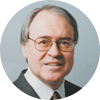At the weekly Wednesday morning case-management meeting, Dr. Schwartz, the head doctor of physical therapy (DPT) at the spine clinic, was presenting a particularly difficult case to his colleagues.
"Her imaging shows moderate disc bulging at C4-6, with a reversal of the lordotic curve," he explained. "There are no somatic dysfunctions noted on the X-rays, and the active and passive ranges of motion are now close to normal. We have tried cervical traction, and I have performed manual therapy and manipulation to C4-6, with no real improvement in her vertigo, balance, or muscle control of her neck." Dr. Schwartz had specialized in orthopedic manual therapy and manipulation, and all those gathered knew he was quite good at many techniques. "I have referred her for epidurals, facet blocks, and she is scheduled for a consultation for a possible vestibular procedure as a last resort. But, somehow I still think this problem is mechanical, and we just haven't figured it out. Any suggestions?"
Janice raised her hand sheepishly. She was another DPT, new to the clinic. "I wonder if a chiropractor could help? I know where to find one." The room got very quiet, and those present looked at her as if she had suggested a consultation with Bigfoot, but it was understandable. The year was 2036, and it was against the law to practice chiropractic unless one was an MD, a DO or a doctor of physical therapy.
The American Physical Therapy Association had declared in 2006 that it intended to control spinal manipulation by 2015. (It took at least a decade longer.) Through stifling legislation, the end of student loans and other fiscal blows, the chiropractic schools had started physical therapy programs in order to survive. This ended up being the major source of income, and PTs soon controlled the schools. Powerful forces in organized medicine also had funded the media fear campaign about cervical manipulation causing strokes and paralysis. The public got the idea that only "medically trained" practitioners could give a "safe and evidence-based treatment." The American Association of Orthopedic Manual Physical Therapy became the darling of the media when they needed commentary about manipulation or spinal disorders. The chiropractic profession had splintered into nine different national associations, all of which lacked any influence. Since the chiropractic degree had been abandoned, attrition simply decreased the ranks of the DCs. By 2036, they had all but disappeared.
Dr. Schwartz cleared his throat. "Dr. Janice, if you know a chiropractor still out there, I would be delighted to have him or her exam this patient! I thought all the DCs were gone!" He looked at the members of the group and did not see any overt opposition on their faces. "This could be an historical event!" he proclaimed.
It was the Wednesday morning case-management meeting, one week later. The patient was comfortable, laying face-up on the treatment table. The DPTs surrounding her had been discussing social events, and did not notice Janice and the chiropractor entering the room.
"Everyone," Janice said somewhat loudly, "I would like you to meet Dr. Langworthy, who took care of me when I had intractable headaches as a child." Dr. Schwartz welcomed him. After some small talk, Dr. Schwartz asked, "I understand you have reviewed the records and imaging concerning this patient?" Dr. Langworthy nodded and walked up to the treatment table. After some questioning of the patient, he asked, "Was a cervical flexion-and-extension study done?
Dr. Schwartz took some time to answer, since he was quickly scrolling through the video file. "No," he said, "and I'm not sure why." Dr. Langworthy began examing the patient, with careful palpation of the upper cervicals. Soon, he asked Dr. Schwartz and the patient, "May I perform an adjustment?" Dr. Schwartz almost fell forward with anticipation. "Certainly," he said.
Dr. Langworthy had the patient turn on her side. The deft recoil thrust on the atlas vertebra was easy to miss unless one was watching carefully. Within an hour, the patient was walking on her own. Dr. Janice's face was beaming, and Dr. Schwartz kept asking Dr. Langworthy questions about his technique. The DC was very gracious. "Thank you for inviting me. I hope I have done some good here." Then he left.
The mood of the small group of DPTs who had attended the case-management meeting seemed pensive. One DPT remarked, "Observing him was like watching an Old World craftsman at work." Dr. Schwartz added, "Yes, much like watching the last samurai. I wish I had studied chiropractic before becoming a physical therapist. But now I believe it is too late."
Click here for more information about John Hanks, DC.





